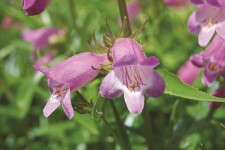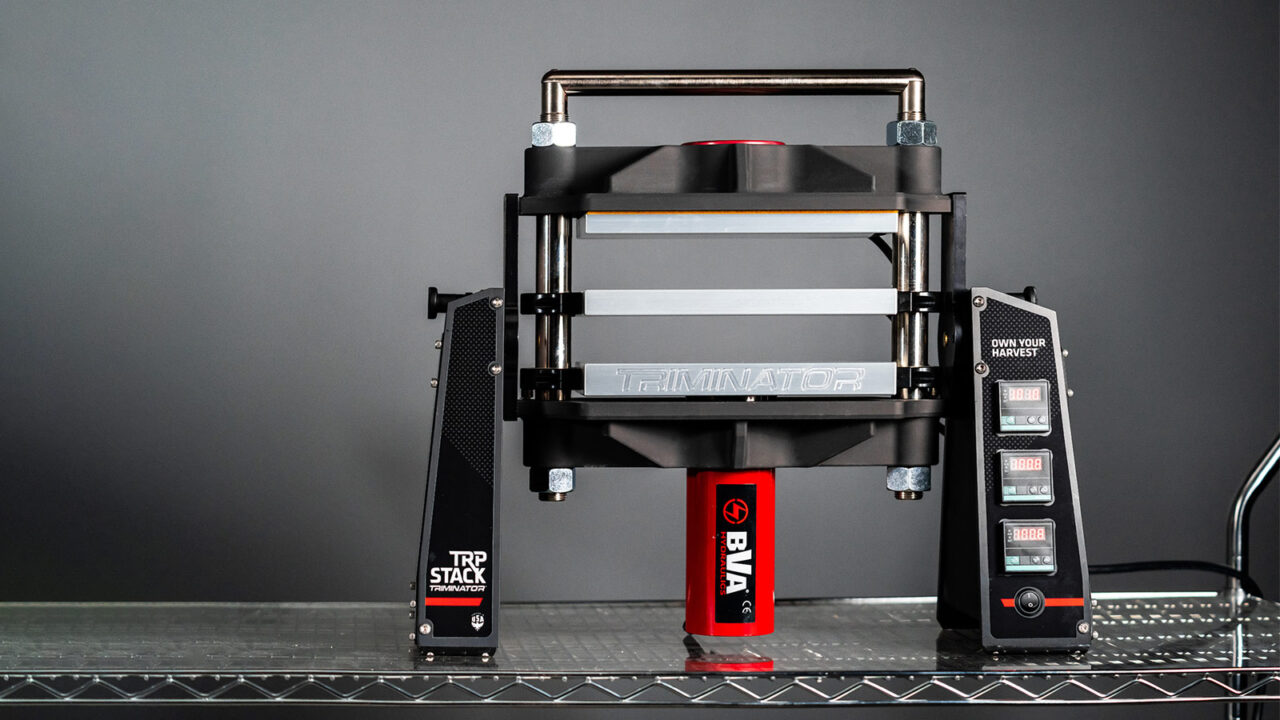How To Grow And Sell Penstemon

Penstemon is an overwhelmingly diverse genus with approximately 250 different species. This genus includes plants that are evergreen, deciduous, shrubby, tall and low-growing. Also known as beard tongue, penstemon exhibits tolerance of a wide range of climates. Most penstemon are native to North and Central America, which encompasses the dry California climate, the higher altitudes of the Rocky Mountains, the Pacific Northwest, the eastern United States and some parts of Mexico.
The common thread among cultivars of this genus is their beautiful tubular, two-lipped flowers. Gardeners love that they attract hummingbirds and other pollinators. Flowers are borne on upright spikes held above mounding foliage. The blooms tend to have pale, speckled or striated interiors. Some have a striking white throat that contrasts well with the colorful outside. Lance-shaped leaves are another shared characteristic. There is bright-green, blue-green and even deep burgundy-red foliage found throughout this genus.
Popular Picks
One popular group is the tender types. These penstemon boast large, dramatic blooms in an array of vivid colors, and their habit is normally taller and more upright, which is ideal for the middle or back of the border. They also tend to have glossy green foliage and can be used as the centerpiece in mixed containers.
These typically flower for a long time, from early summer through the mid-late summer. Some of the most popular tender varieties and hybrids include: the Phoenix series, ‘Pretty Petticoat,’ ‘Ruby’ and ‘Sour Grapes.’
The species Penstemon digitalis includes the Perennial Plant Association’s Perennial Plant of the Year from 1996, Penstemon ‘Husker Red,’ which is famous for its pronounced red foliage. This variety is widely available and produced from seed or unrooted cuttings. Some newer varieties such as P. ‘Dark Towers’ and P. ‘Prairie Twilight’ are patented, vegetatively produced varieties with excellent garden performance. They are considered to be upgrades to ‘Husker Red.’
The digitalis species is typically hardy to USDA Zone 3, and while ‘Dark Towers’ is hardy to Zone 3, ‘Prairie Twilight’ is hardy to Zone 4. Other more common, hardy species include P. ×mexicali, P. barbatus, P. hirsutus, P. pinifolius, P. schmidel, P. smallii and P. strictus. P. pinifolius ‘Meresa Yellow’ is a unique variety because its tubular flowers are uncommonly yellow.
General Culture Tips
Depending on the species, there are spring-blooming penstemon and summer-blooming penstemon. The tender varieties usually bloom early through mid-summer. Hardy types typically bloom in late spring through early summer. Once flowering is complete, it is recommended to remove long flower stalks and prune them down to the base of the foliage. This helps improve their winter survival. Mulching also increases the chance of winter survival if the gardener is located in a mild zone, such as Zone 7 or colder.
When growing penstemon in pot production for commercial greenhouse sales, the pH target should be between 5.8 to 6.5, and EC should not be higher than 1.5 mmhos/cm, as these plants are not very heavy feeders. In the Pennsylvania trial garden at Green Leaf Plants, growers target about 100 to 150 ppm nitrogen constant liquid feed, and penstemon respond well to this range.
The best thing is to avoid overwatering and be sure to provide good air movement. Good airflow in humid climates is beneficial. Most penstemon prefer fertile, well-drained soil and will not tolerate a wet root system. Penstemon also prefer the high-light conditions of spring and summer but do not necessarily require long days to flower. The crop can be finished at temperatures of 55°F to 65°F at night and 65°F to 80°F during the day.
Some varieties that are native to dry desert or alpine areas can be quite finicky if the grower is located in another climate. Germination can also be a challenge for some seed species and varieties. It is best for a beginner to seek out varieties that are produced and distributed on a large scale. There is a wide variety of commercially available species and hybrids.
Aphids have been known to attack the flower buds and stems, and a severe aphid infestation can result in deformed buds and flowers. Powdery mildew can be an occasional nuisance in late summer. Stem rot is also a problem when plants remain wet for long periods.
Crop Production By Cultivar
Penstemon can be propagated by seed, cuttings and division. Most tender varieties do not require vernalization to flower. Liners can be purchased and transplanted in the early mid-spring months for flowering plants in late June through July. Unrooted tip cuttings of many tender hybrids can be stuck in late winter through early spring. They can be grown outside once the danger of frost has passed. Growth regulators may be beneficial for taller tender species and hybrids. Staking may be beneficial if growing outdoors.
Some of the hardy varieties and hybrids that do not require vernalization can also be purchased in liner form and transplanted in spring for blooming plant sales in early to mid-summer. This includes the P. ×mexicali cultivars such as ‘Pike’s Peak Purple’ and ‘Sweet Joanne.’ Unrooted tip cuttings can be started in late winter through early spring. The new Carillo series, which is available in rose and purple with white throats, is produced from seed and will flower in the first year.
The P. ×mexicali cultivars are hardy to Zone 5 and are popular with growers and gardeners because of their floriferous nature, well-branched plant habit and ease of growing over a large range of climates.
Other hardy cultivats in the P. barbatus, P. digitalis and P. hirsutus species, such as the popular ‘Prairie Dusk’ and ‘Husker Red,’ perform well when liners are planted in late summer or early fall and the plants are allowed to bulk in the pot prior to vernalization. Many of the late-spring-blooming, hardy types can be propagated in late summer by small divisions or basal cuttings rather than tip cuttings. Cuttings are rooted then transplanted into the final sales container before the onset of cool weather.
Depending on the location of the grower, overwintering outdoors may be an option for these hardier types, as long as there is not constant temperature fluctuation below and above freezing. If overwintering is desired in a region where outdoor vernalization is not an option, keep plants in a cold greenhouse set at 35°F to 38°F and allow plants to flower naturally the following spring season.
A new Penstemon schmidel series called Riding Hood is fully hardy to Zone 5 and grows to a maximum height of 22 inches. There are six colors in the series. Basal cuttings can be started in winter and liners can be planted in spring for finished material in early summer. Because the Riding Hood varieties can be flowered the same year from unrooted cuttings and have a desirable, compact habit, this series is attractive to many commercial growers.
With the myriad of choices within the genus, growers can select the best varieties to grow for their region of the country and level of expertise. Gardeners can enjoy the flexibility of their use whether it is in the perennial border or as a specimen annual in the border or mixed container. All in all, the fantastically diverse penstemon genus has something for everyone. GG









